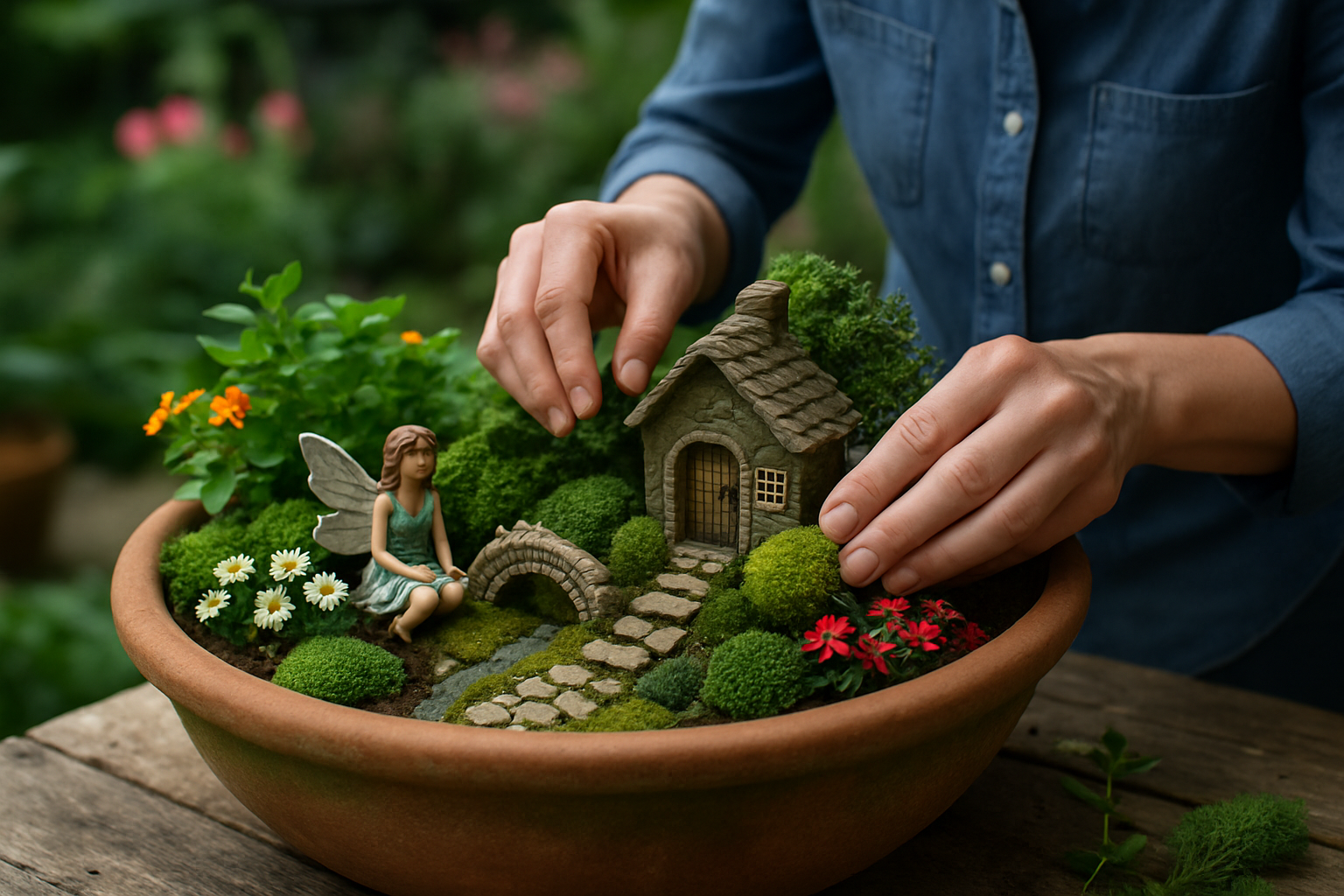The Whimsical World of Fairy Garden Terrariums
Imagine peering into a miniature wonderland, where tiny plants and diminutive decorations create a magical realm enclosed in glass. This enchanting scene is not a figment of your imagination, but the captivating reality of fairy garden terrariums. These delightful miniature landscapes have taken the home decor world by storm, offering a unique blend of gardening, creativity, and whimsy that appeals to both the young and young at heart.

The fusion of terrariums with the concept of fairy gardens is a more recent phenomenon, emerging in the early 2000s. This combination allowed for a perfect marriage of miniature gardening and fantastical storytelling, creating tiny ecosystems that spark imagination and bring a touch of magic to any living space.
The Art of Crafting Miniature Worlds
Creating a fairy garden terrarium is an art form that requires a delicate balance of horticultural knowledge and artistic vision. The process begins with selecting an appropriate container, typically a glass vessel that allows for ample viewing from multiple angles. Clear glass bowls, apothecary jars, and even repurposed light bulbs have become popular choices for these miniature landscapes.
The foundation of the terrarium is crucial, starting with a layer of small pebbles or activated charcoal to ensure proper drainage. This is followed by a thin layer of sphagnum moss to prevent soil from seeping into the drainage layer. The planting medium, usually a well-draining potting mix, comes next, providing a nurturing environment for the carefully selected miniature plants.
Choosing the Perfect Pixie-Sized Plants
Selecting the right plants is paramount to the success of a fairy garden terrarium. Miniature ferns, such as the button fern or bird’s nest fern, offer delicate foliage that mimics full-sized trees in this diminutive landscape. Succulents like echeveria and sedum provide interesting textures and require minimal care, making them ideal for novice terrarium gardeners.
For a pop of color, consider incorporating tiny flowering plants like African violets or miniature orchids. These blooming beauties add vibrancy and life to the magical scene. Moss varieties, including cushion moss and sheet moss, can be used to create lush carpets and rolling hills within the terrarium, enhancing the fairytale-like atmosphere.
Accessorizing the Enchanted Realm
The true charm of fairy garden terrariums lies in the intricate details and accessories that bring the miniature world to life. Tiny houses, often crafted from natural materials like bark or painted resin, serve as focal points and imaginary homes for the terrarium’s mystical inhabitants. Miniature furniture, such as thimble-sized tables and acorn cap chairs, can be arranged to create cozy outdoor living spaces for the fairies.
Pathways made from crushed shells or miniature pebbles wind through the landscape, connecting various elements of the garden. Diminutive bridges, crafted from twigs or polymer clay, can span imaginary streams created with blue glass beads or resin. Toadstools, crafted from polymer clay or small painted stones, add a whimsical touch and provide seating for the garden’s ethereal residents.
Maintenance and Care of Miniature Marvels
While fairy garden terrariums offer a low-maintenance alternative to traditional gardening, they still require thoughtful care to thrive. Proper watering is essential, with most terrariums benefiting from a light misting rather than heavy watering. The enclosed environment creates its own microclimate, often requiring less frequent watering than open-air gardens.
Pruning is another crucial aspect of terrarium maintenance. As plants grow, they may need occasional trimming to maintain the desired scale and prevent overcrowding. This pruning also helps to maintain the fairy garden’s whimsical aesthetic, ensuring that the miniature landscape remains balanced and visually appealing.
The Therapeutic Benefits of Tiny Gardens
Beyond their decorative appeal, fairy garden terrariums offer surprising therapeutic benefits. The act of creating and maintaining these miniature worlds can be a meditative and stress-reducing activity. The focus required to work on such a small scale encourages mindfulness, allowing individuals to temporarily escape the pressures of daily life.
For children, fairy garden terrariums serve as gateways to nature and storytelling. These magical landscapes encourage imaginative play and can be used as educational tools to teach about plant life cycles, ecosystems, and the importance of environmental stewardship.
Incorporating Fairy Garden Terrariums in Modern Decor
As the popularity of fairy garden terrariums continues to grow, interior designers are finding innovative ways to incorporate these whimsical elements into modern home decor. Large, statement terrariums can serve as unique coffee table centerpieces, while clusters of smaller terrariums create enchanting windowsill displays.
In office environments, fairy garden terrariums offer a touch of green and a dash of whimsy, providing a welcome respite from the sterile corporate atmosphere. These miniature gardens have also found their way into educational settings, with schools using them as hands-on learning tools in science and art classes.
The Future of Fairy Garden Terrariums
As we look to the future, the world of fairy garden terrariums continues to evolve. Technological advancements are beginning to make their way into these magical miniature landscapes. LED lighting systems, designed to mimic natural daylight cycles, are being integrated into terrarium designs, allowing for the creation of more complex ecosystems and extending the range of plants that can thrive in these enclosed environments.
3D printing technology is also revolutionizing the world of fairy garden accessories. Hobbyists and professional designers alike can now create intricate, custom-designed elements for their terrariums, from tiny fairy houses with detailed architectural features to miniature replicas of famous landmarks.
The fairy garden terrarium trend shows no signs of slowing down, continuing to captivate individuals of all ages with its perfect blend of nature, creativity, and magic. As we increasingly seek ways to connect with nature in our urban environments, these enchanting miniature worlds offer a perfect solution – bringing a touch of whimsy and wonder into our everyday lives, one tiny garden at a time.





